
'Footing'
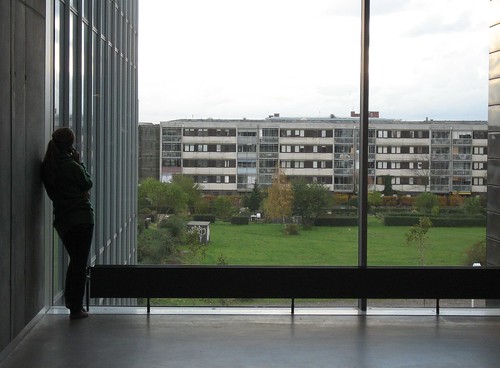

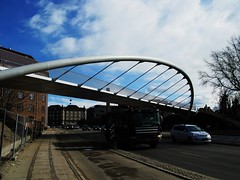





 Greek design firm decaARCHITECTURE has won the Piranesi Award with their Aloni House in Antiparos, Greece. The house fills the void between two retaining walls that bridge a 'saddle' between adjacent hills. The landscape of the hill flows cleanly over the house, blending in seamlessly. Four courtyards bring light into the living spaces.
Greek design firm decaARCHITECTURE has won the Piranesi Award with their Aloni House in Antiparos, Greece. The house fills the void between two retaining walls that bridge a 'saddle' between adjacent hills. The landscape of the hill flows cleanly over the house, blending in seamlessly. Four courtyards bring light into the living spaces.



That's the trick architect Gregory Henriquez is trying to pull off in a rundown section of Vancouver, in one of the biggest redevelopment projects the city has seen yet.
Le Corbusier's influence as an architect has spanned generations. Theodore Dalrymple argues he is more appropriately classified as a totalitarian.

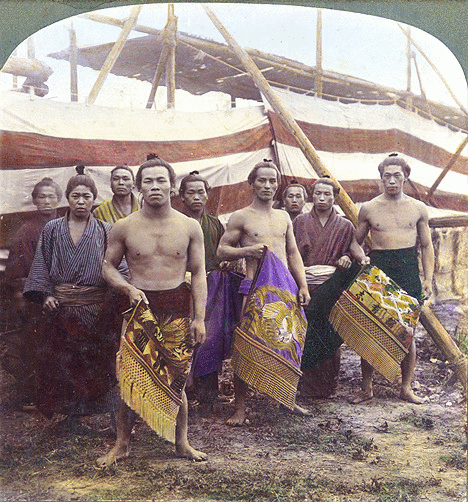
[Whoops! Double-WU Jeopardy: Also See: This Just Published]
The opportunity to catch a glimpse at life in a long-ago era in 3D is rare indeed, but thanks to the stereoviews taken by photographer T. Enami, Meiji Japan in the early 1900s momentarily appears vivid and immediate. Enami was Japan’s most prolific stereo-photographer, and his stereoviews have appeared in National Geographic Magazine and many books.
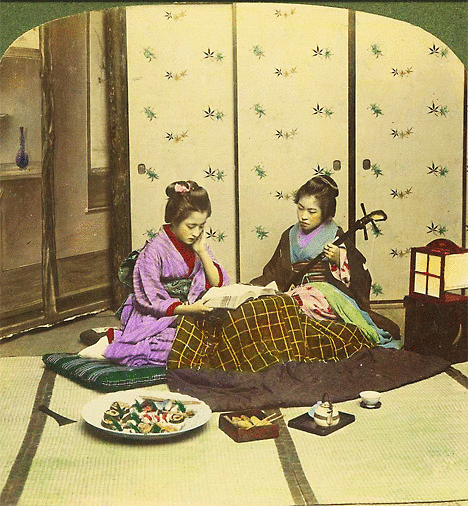
Each pair of images captured by Enami, ranging from landscapes and sedate scenes of country life to humorous photographs of beefy men bathing nude, has been assembled in a Flickr gallery by Okinawa Soba and transformed into animated GIFs by Pink Tentacle.
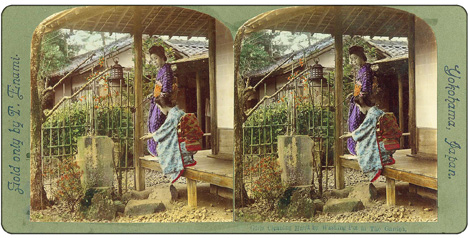
In traditional stereoscopic photography, a three-dimensional illusion is created from a pair of 2-D photographs that represent two slightly different perspectives of the same object or scene. The deviation between the two photographs is similar to the perspectives that both eyes naturally receive in binocular vision.

Such images are normally viewed in 3-D using a stereoscope, but ‘freeviewing’ is also possible, with a process that involves putting one’s eyes directly over the images and slowly backing away while focusing on the single merged, out-of-focus picture that appears.
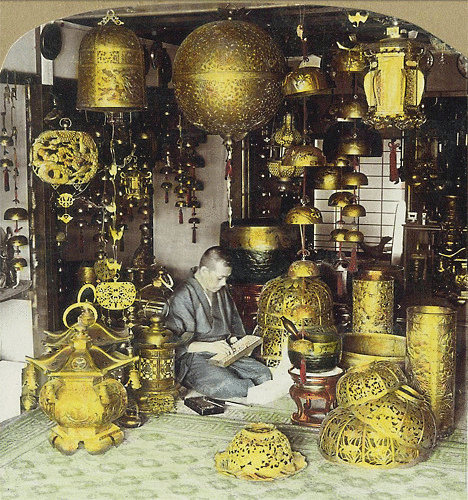
Enami was an enigmatic figure for many decades after his death, but information provided by his descendents in 2006 helped bring together a stunning collection of work. The online archive of his photographs represents only a small fraction of his remarkable legacy.
Some of the most amazing photography doesn't use a camera at all. These incredible images were produced using ancient methods - no lenses required. Click Here to See More



The [August 1950] Mitsukoshi show also included a chair with a woven-bamboo seat backrest. Noguchi designed this piece for export, with the bamboo elements — produced in the same way as traditional fish baskets — to be fabricated in Japan and shipped to the United States. There they would be attached to bent-metal frames, manufactured in America. The chair remained a unique prototype, but the next year Noguchi was able to realize his ambition of encouraging local production through the export of modern design.
– Bruce Altshuler. Noguchi. Abbeville Modern Masters. New York: Abbeville , 1994, p. 58

It was on his way to Hiroshima to discuss his bridge proposal that Noguchi first visited the town of Gifu, known for its manufacture of umbrellas and lanterns from mulberry-bark paper. Having heard of his design work, the mayor asked him to create contemporary lamps using the traditional bamboo-and-paper construction. That evening Noguchi sketched his first two Akari (the word means “light as illumination) light sculptures … He viewed each Akari basically as two sculptures, one when light was reflected off it, and another when light was emitted from it.
– Bruce Altshuler. Noguchi. Abbeville Modern Masters. New York: Abbeville , 1994, p. 58

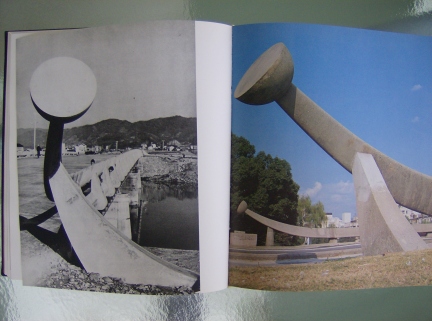


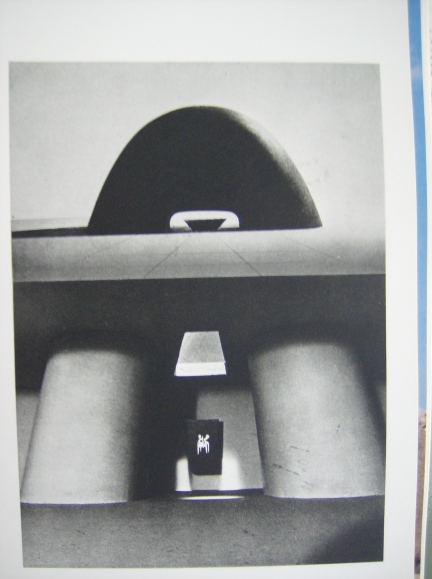
The four photographs above a from Isamu Noguchi. Text by Sam Hunter. New York: Abbeville Press, 1978:

Kenzo Tange, Hiroshima Peace Memorial Museum, Hiroshima, 1952.
Courtesy of Chugoku Shimbun.
1971- 2004 yıllarını kapsayan bir araştırmaya göre reklamların yüzde 12,7’sinde kadınların fiziksel görünüşü endişeli, yüzde 11,5’inde seks objesi, yüzde 15,5’inde ise dekoratif bir unsur olarak kullanılıyor.
Reklamda cinsel öğelerin kullanımı üzerine bugüne kadar pek çok çalışma yapılmıştır. Reklamda kullanılan cinselliğin etkileri üzerine yapılan çalışmalardan elde edilen sonuçlar, cinselliğin tüketicilerin satın alma motivasyonu ve arzularını ateşlemede işe yaradığını ortaya koymuştur. Reichert, bazı vakalarda, reklamda cinselliğin güçlü, canlı ve uzun ömürlü markaların yaratılmasında katkıda bulunduğunu söylemektedir.
Christiane Schmerl reklamlarda tespit edilen bütün bu kılavuzluk fonksiyonlarının gençler üzerindeki etkisinden korkmakta ve şöyle ilave etmektedir: “Reklam spesifik cinsiyet sosyalizasyonunu şart koşar. Milyonlarca kez kullanılan basmakalıplar ile etkisini güçlendirir -daha çok tutucu yönde-, her yerdeki duvarlarda, radyoda ya da televizyonda, bütün dergilerde olmak suretiyle yalnızca çocuklara değil, bilakis özellikle gençler ve yetişkinlere hitap eder. Bu kişiler hitap edilen alıcı olarak, ürünün ismi olmaksızın otomatikman kılavuz resimlere ait olan stereotipleri “gerçek kadın” “gerçek erkek” olarak öğrenirler.
Kadın bedeni bir zorlamayla karşı karşıya, reklamlarda kilolu ya da güzel olmayan bir kadının problem olarak gösterilmesi, bu beden değişmeli başka yolu yok ifadesi ile sunulması istenilen ve istenilmeyen kadın imajını ortaya koyuyor.
Kadın cinselliğinin öne çıkarıldığı bir reklam, sadece erkekler için değil, farklı şekillerde ve yönlerde kadınları da etki altına alabiliyor. Bunun ilk basamağı olarak gerek genç kızlar, gerek yetişkin kadınlar için ideal ve örnek alınacak kadın tipleri öne çıkarılıyor; adeta “her kadının düşlerini süsleyen,” zengin, bakımlı, gösterişli, güzel ve genç kadın tipleri şuuraltına yerleştiriliyor. Hemen ardından, doğrudan veya dolaylı olarak “siz de böyle birisi olun” mesajı veriliyor. Bu tür reklam bombardımanı altında kalan pek çok kadın, o ürünü almakla kendisini öyle hissedebiliyor. Kendini ilgilendiren bir ürün reklamını gören kadın tüketici, reklamdaki sunulan gerçekliğe inanmasa bile sunulan ürüne dikkat ederek, reklamda rol alan rüya kadınla özdeşleşme yoluna gidiyor. Bu yöndeki reklamların en çok kullanıldığı ürünlerin markalı ve pahalı ürünler olması ayrı bir sömürü uygulamasını daha ortaya çıkarıyor.
Seyirci konumundaki geniş halk kitleleri, üreten firma patronlarının daha fazla tükettirme emelleriyle, insanlara o ürünleri tükettirebildiği oranda para ve gelir elde eden reklamcıların acımasızca taarruzlarına hedef oluyor. Bu zayıf damarı büyük bir “keşif” yapmışçasına ve hesapsızca kullanan patron-reklamcı ittifakının piyasaya sürdüğü her bir reklam, adeta bir öncekini aratır seviyede kadın cinselliğini kullanıyor.
Cinsel içerikli reklamlar birçok farklı şekilde olabiliyor. Örneğin çift anlamlı sözler, imalı ifadeler, bilinçaltının algısına yönelik cinsel imgeler ve cinsellikle ilgili vaadler kullanılabiliyor.
Yüklenen videoda jean kilbourne tarafından verilen, reklamlar ve ataerkil toplumda kadın sembolü uzerinde duran ders/ konferansı izleyebilirsiniz.
Reklamlarda kadının bir metaya indirgenmesi ve cinsel öğelerin reklamlarda kullanılması hakkında daha fazlasını okumak isteyebilecekler için, başlangıç olarak, aşağıdaki lisansüstü çalışması önerilebilir:
http://globalmedia-tr.emu.edu.tr/bahar2006/Lisansustu_Calismalari/Anil%20Dal-Cinsel%20_gelerin%20Reklamda%20Kulanimi.pdf
Jean Kilbourne’s pioneering work helped develop and popularize the study of gender representation in advertising. Her award-winning Killing us Softly films have influenced millions of college and high school students across two generations and on an international scale. In this important new film, Kilbourne reviews if and how the image of women in advertising has changed over the last 20 years. With wit and warmth, Kilbourne uses over 160 ads and TV commercials to critique advertising’s image of women. By fostering creative and productive dialogue, she invites viewers to look at familiar images in a new way, that moves and empowers them to take action.
indir ( 280 mb. ) / download ( 280 mb. ):
